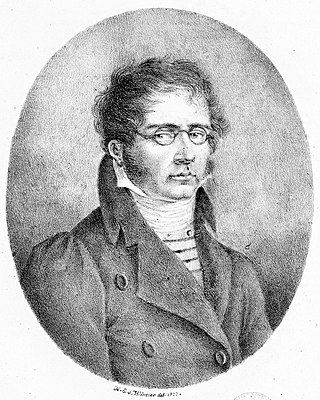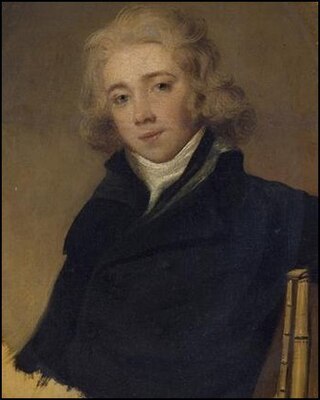
Franz Ignaz Danzi was a German cellist, composer and conductor, the son of the Italian cellist Innocenz Danzi (1730–1798) and brother of the noted singer Franzeska Danzi. Danzi lived at a significant time in the history of European music. His career, spanning the transition from the late Classical to the early Romantic styles, coincided with the origin of much of the music that lives in our concert halls and is familiar to contemporary classical-music audiences. In his youth he knew Wolfgang Amadeus Mozart, whom he revered; he was a contemporary of Ludwig van Beethoven, about whom he — like many of his generation — had strong but mixed feelings and he was a mentor for the young Carl Maria von Weber, whose music he respected and promoted.

The Octet in F major, D. 803 was composed by Franz Schubert in March 1824. It was commissioned by the renowned clarinetist Ferdinand Troyer and came from the same period as two of Schubert's other major chamber works, the 'Rosamunde' and 'Death and the Maiden' string quartets.

The String Octet in E-flat major, Op. 20, MWV R 20, was written by the 16-year-old Felix Mendelssohn during the fall of 1825 and completed on October 15. Written for four violins, two violas, and two cellos, this work created a new chamber music genre. Conrad Wilson summarizes much of its reception ever since: "Its youthful verve, brilliance and perfection make it one of the miracles of nineteenth-century music." This was one of the first works of Mendelssohn to be very well received.

The Sonata for Arpeggione and Piano in A minor, D. 821, was written by Franz Schubert in Vienna in November 1824. The sonata is the only substantial composition extant today for the arpeggione. The sonata was composed in November 1824, about a month after Schubert had returned to Vienna from his second stay in Zseliz. It has been adapted to other string instruments, especially the cello. It can be played on the GuitarViol which is a Modern Arpeggione.
The String Sextet in D minor "Souvenir de Florence", Op. 70, is a string sextet scored for 2 violins, 2 violas, and 2 cellos composed in the summer of 1890 by Pyotr Ilyich Tchaikovsky. Tchaikovsky dedicated the work to the St. Petersburg Chamber Music Society in response to his becoming an Honorary Member. The work, in the traditional four-movement form, was titled "Souvenir de Florence" because the composer sketched one of the work's principal themes while visiting Florence, Italy, where he composed The Queen of Spades. The work was revised between December 1891 and January 1892, before being premiered in 1892. It is the only string sextet by the composer.

Hyacinthe Jadin was a French composer who came from a musical family. His uncle Georges Jadin was a composer in Versailles and Paris, along with his father Jean Jadin, who had played bassoon for the French Royal Orchestra. He was one of five musical brothers, the best known of whom was Louis-Emmanuel Jadin.

The String Quartet No. 3 in D major, Op. 44, No. 1, MWV R 30 was composed by Felix Mendelssohn (1809-1847) in July 1838 at the age of 29. It premiered in 1839, then was published later in 1840. It is a traditional quartet, comprising two violins, a viola, and a cello. The piece is part of the Op. 44 set of 3 string quartets that Mendelssohn dedicated to the Crown Prince of Sweden.
An organ concerto is an orchestral piece of music in which a pipe organ soloist is accompanied by an an orchestra, although some works exist with the name "concerto" which are for organ alone.
Sonatas, duos and fantasies by Franz Schubert include all works for solo piano by Franz Schubert, except separate dances. They also include a number of works for two players: piano four hands, or piano and a string instrument.

The String Quartets, Op. 50, were composed by Joseph Haydn in 1787. The set of six quartets was dedicated to King Frederick William II of Prussia. For this reason the set is commonly known as the Prussian Quartets. Haydn sold the set to the Viennese firm Artaria and, without Artaria's knowledge, to the English publisher William Forster. Forster published it as Haydn's Opus 44. Haydn's autograph manuscripts for Nos. 3 to 6 of the set were discovered in Melbourne, Australia, in 1982.
From March 1816 to August 1817, Franz Schubert composed four violin sonatas. All four were published after the composer's death: the first three, D 384, 385 and 408, as Sonatinas in 1836, and the last one, D 574, as Duo in 1851. Schubert composed two more pieces for violin and piano, in October 1826 and December 1827 respectively: a Rondo, D 895, which was published during the composer's lifetime (Op. 70), and a Fantasy, D 934, which was premiered in January 1828, less than a year before the composer's death.
In 1816, Franz Schubert composed his first three violin sonatas, D 384, 385 and 408. They were published after the composer's death as Sonatinas in 1836. These sonatas breathe an intimate atmosphere, requiring relatively little virtuoso bravura from their performers.
The Violin Sonata No. 2 in E♭ major, Op. 102, was written by Camille Saint-Saëns from February to March 1896, and premiered on 2 June 1896 in Paris.







